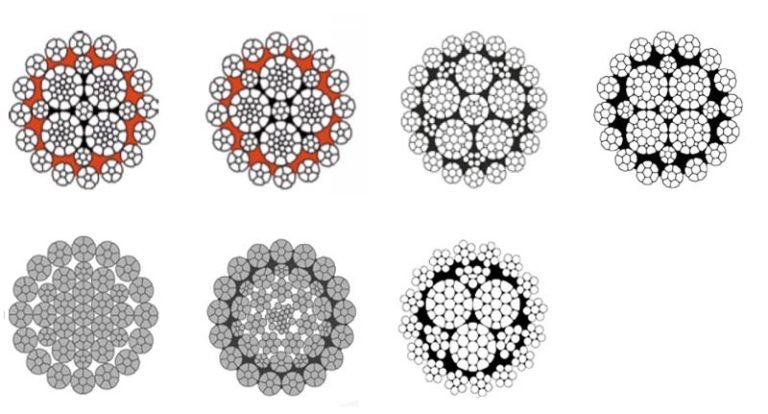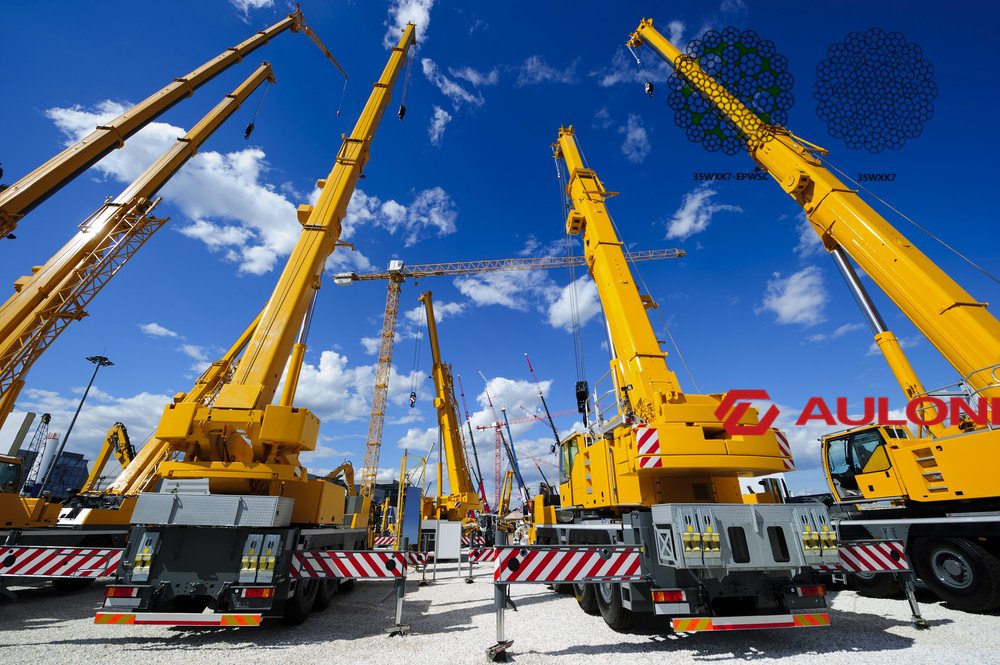Regular inspection and maintenance of wire ropes are critical for ensuring safety in various industrial and construction applications. There are several indicators that a wire rope may be compromised and should be retired from service. Below are the key signs to look for during wire rope inspection:
1. Broken or Fractured Wires
- Visible Broken Wires: The presence of broken wires is a major red flag. As a general rule, if you detect more than 10 broken wires in a single strand within a single rope lay length or 5 broken wires over a concentrated area, the rope should be replaced immediately.
- Fractured or Bent Wires: Wires that appear fractured, bent, or kinked can indicate that the rope has undergone severe stress or shock loading.
2. Abrasion or Wear
- Surface Wear: Ropes showing signs of abrasion (flattened surfaces, shiny spots, or thinning) are no longer fit for use. This usually occurs due to excessive friction with pulleys, sheaves, or other surfaces.
- Loss of Diameter: If the rope’s diameter is reduced by 10% or more compared to its original size, it has likely experienced wear, and its load-bearing capacity is compromised.
3. Corrosion and Rust
- Surface Rust: Rust or corrosion on the wire rope’s surface can weaken the structure of the wires and reduce the overall strength.
- Internal Corrosion: Even if external corrosion is minimal, internal rust can occur and weaken the rope from within. This can be identified by swelling or an increase in rope diameter, indicating trapped moisture and corrosion.
4. Deformation
- Kinking or Bird Caging: Kinks or loops can cause wires to bend at sharp angles, resulting in bird caging (where the strands or wires become separated or “birdcaged”). This type of deformation is a sign of serious internal damage and requires immediate replacement.
- Crushing or Flattening: Flattened or crushed sections indicate that the rope has been subjected to severe compression or impact forces, compromising its integrity.
5. Stretching or Elongation
- Excessive Stretching: If the rope appears to be stretched beyond its original length, it may have been subjected to overloading. Elongation can indicate that the rope’s internal structure has been altered, reducing its strength.
- Distorted Lay: A distorted lay (where the strands no longer follow the original helical pattern) suggests that the rope has lost its original shape due to stress or improper loading.
6. Core Protrusion or Damage
- Protruding Core: A protruding core indicates that the rope’s strands are no longer providing uniform support to the core, compromising the overall structure.
- Damage to Core or Wire Ends: Visible damage to the core or any unraveling of wire ends is a clear indication that the rope is no longer structurally sound.
7. Heat Damage
- Heat Discoloration: Wire ropes exposed to high temperatures may show discoloration or fused wires, reducing the rope’s strength.
- Brittleness: Exposure to heat can cause the rope to become brittle and lose its flexibility, making it prone to sudden failure.
8. Fatigue and Fraying
- Fatigue Cracks: Repeated bending and loading can cause fatigue cracks at the contact points between strands or at wire bends.
- Fraying at Ends or Terminations: If the rope starts to fray at the ends or around fittings, it may indicate that the terminations are compromised.
9. Unusual Noise or Stiffness
- Grinding or Clicking Noise: Unusual noises during operation can suggest internal strand damage or friction between broken wires.
- Increased Stiffness: A rope that has become unusually stiff may have internal damage, reducing its ability to bear loads.
Conclusion
If any of these signs are observed during the inspection of a wire rope, it should be removed from service immediately to prevent potential accidents or failures. Regular inspections, maintenance, and adhering to the manufacturer’s guidelines are essential for ensuring the safety and longevity of wire rope systems.
If you need assistance with wire rope selection or have concerns about the condition of your wire ropes, feel free to contact us:
- Website: www.wireropes.net
- Email: info@wireropes.net
- Phone/WhatsApp: +86-15573139663
Let us help you ensure the safety and performance of your equipment!








